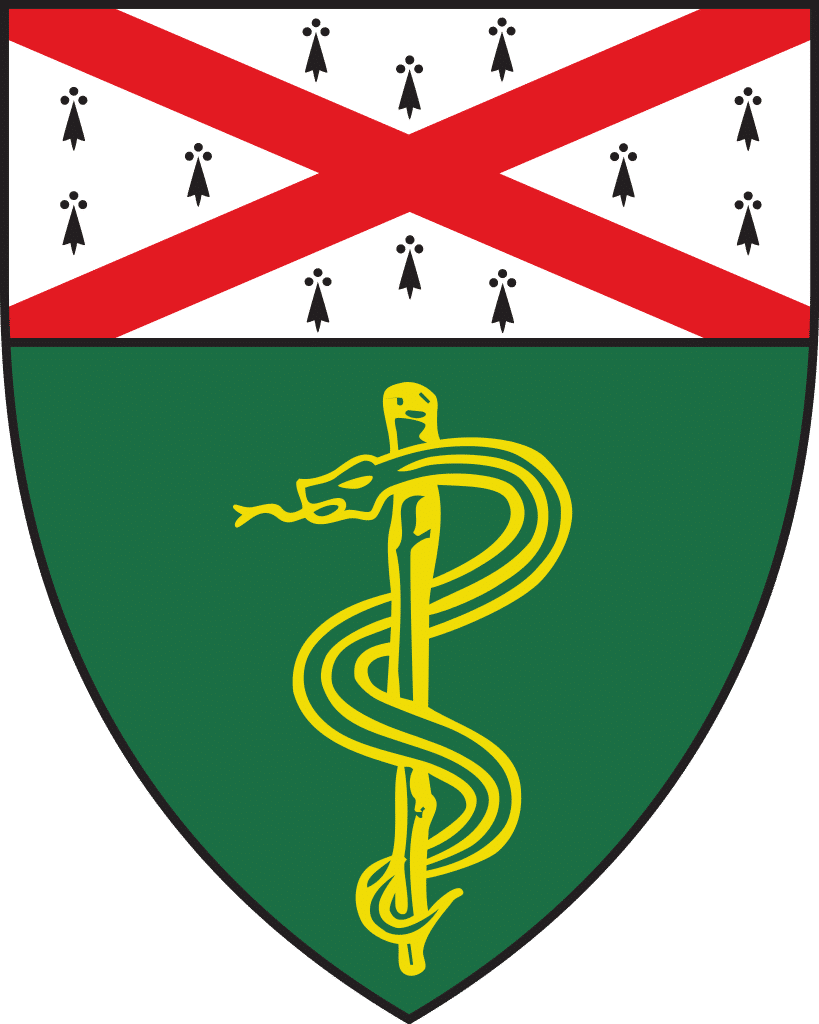预约演示
更新于:2025-07-23
Bobcat339
更新于:2025-07-23
概要
基本信息
原研机构 |
非在研机构- |
权益机构- |
最高研发阶段临床前 |
首次获批日期- |
最高研发阶段(中国)临床前 |
特殊审评- |
结构/序列
分子式C16H12ClN3O |
InChIKeyQMGYGOOYCNTEQO-UHFFFAOYSA-N |
CAS号2280037-51-4 |
关联
100 项与 Bobcat339 相关的临床结果
登录后查看更多信息
100 项与 Bobcat339 相关的转化医学
登录后查看更多信息
100 项与 Bobcat339 相关的专利(医药)
登录后查看更多信息
26
项与 Bobcat339 相关的文献(医药)2025-07-17·ACS Infectious Diseases
Identification and Evaluation of Non-Nucleosidic MTase Inhibitors against SARS-CoV-2 nsp14 with Lower-Micromolar Anti-Coronavirus Activity.
Article
作者: Yang, Sidi ; Zhou, Jun ; Wen, Yuanmei ; Zheng, Peisen ; Guo, Deyin ; Zhong, Fengxia ; Zhang, Xumu ; Ma, Qianhan ; Pan, Fan ; Li, Yingjun ; Zhou, Qifan
Severe acute respiratory syndrome coronavirus 2 (SARS-CoV-2) causes respiratory infections ranging from mild to severe, posing significant public health risks. The emergence of new variants highlights the need for inhibitors targeting conserved nonstructural proteins like nsp14, a key N7-methyltransferase (MTase) critical for viral RNA capping, immune evasion, and replication. Here, we screened 131 compounds using a drug repurposing approach and identified five candidates that inhibit MTase activity. Bobcat339 showed significant inhibition (IC50 = 21.6 μM) and binding affinity (ΔTm = +3.9 °C). It also reduced the replication of HCoV-229E and SARS-CoV-2 in infected Huh7 cells (EC50 = 29.8 and 28.4 μM, respectively). Molecular docking suggested Bobcat339 binds the SAM-binding pocket of nsp14 MTase. These results identify Bobcat339 as a promising lead for developing selective, non-nucleoside nsp14 inhibitors, supporting further structural optimization and preclinical evaluation.
2025-05-01·KIDNEY INTERNATIONAL
The metabolite alpha-ketoglutarate inhibits vascular calcification partially through modulation of TET2/NLRP3 inflammasome signaling pathway
Article
作者: Chen, An ; Ou, Jing-Song ; Lu, Lihe ; Dong, Qianqian ; Liang, Qingchun ; Wang, Siyi ; Gong, Yuan ; Li, Mingxi ; Fu, Mingwei ; Li, Yining ; Liu, Xiaoyu ; Zhang, Xiuli ; Lan, Zirong ; Yan, Jianyun ; Ye, Yuanzhi ; Feng, Liyun
INTRODUCTION:
Vascular calcification is prevalent in chronic kidney disease (CKD), but existing medical treatments fail to achieve satisfactory therapeutic effects. Vascular calcification is now recognized as an active multifactorial process involving diverse mechanisms. Alpha-ketoglutarate (AKG), an intermediate in tricarboxylic acid cycle, has been demonstrated to extend lifespan and ameliorate age-related osteoporosis. However, whether AKG inhibits vascular calcification remains unknown.
METHODS:
Here, mineral deposition was studied with AKG treatment in rodent and human vascular smooth muscle cells (VSMCs) under osteogenic conditions in vivo and in vitro.
RESULTS:
AKG treatment remarkably ameliorated calcification of rat and human arterial rings ex vivo and aortic calcification in CKD rats and mice. Mechanistically, AKG treatment upregulated DNA demethylase ten-eleven translocation 2 (TET2) expression during vascular calcification. Knockdown of TET2 by siRNA and pharmacological inhibition of TET2 by Bobcat339 promoted vascular calcification in rat VSMCs. Bobcat339 also enhanced rat aortic ring calcification. Conversely, TET2 overexpression ameliorated vascular calcification in rat VSMCs, rat aortic rings and CKD rats. Furthermore, VSMC-specific TET2 deficiency promoted aortic calcification in CKD mice. Both TET2 siRNA and Bobcat339 independently counteracted the inhibitory effect of AKG on vascular calcification of rat VSMCs. Inhibitory effect of AKG administration on vascular calcification was reduced in TET2 knockout mice. TET2 overexpression reduced the levels of the NLRP3 inflammasome pathway, cleaved Caspase-1 and IL-1β protein expression in VSMCs and NLRP3 agonist Nigericin-induced cell calcification.
CONCLUSIONS:
Our study demonstrate that AKG attenuates vascular calcification partially via upregulation of TET2 and inhibition of NLRP3 inflammasome, indicating the critical role of epigenetic modifier in vascular calcification. Modulation of TET2 may become a promising strategy for the treatment of vascular calcification.
2024-12-01·CELLULAR AND MOLECULAR LIFE SCIENCES
Epigenetic regulation of DNA repair gene program by Hippo/YAP1-TET1 axis mediates sorafenib resistance in HCC
Article
作者: Lin, Zhenping ; Li, Xun ; Rao, Yipeng ; You, Weixin ; He, Ting ; Mo, Chunli ; Shen, Huanming ; Li, Boan ; Zhang, Rui ; Wang, Shuai
Abstract:
Hepatocellular carcinoma (HCC) is a malignancy that occurs worldwide and is generally associated with poor prognosis. The development of resistance to targeted therapies such as sorafenib is a major challenge in clinical cancer treatment. In the present study, Ten-eleven translocation protein 1 (TET1) was found to be highly expressed in sorafenib-resistant HCC cells and knockdown of TET1 can substantially improve the therapeutic effect of sorafenib on HCC, indicating the potential important roles of TET1 in sorafenib resistance in HCC. Mechanistic studies determined that TET1 and Yes-associated protein 1 (YAP1) synergistically regulate the promoter methylation and gene expression of DNA repair-related genes in sorafenib-resistant HCC cells. RNA sequencing indicated the activation of DNA damage repair signaling was extensively suppressed by the TET1 inhibitor Bobcat339. We also identified TET1 as a direct transcriptional target of YAP1 by promoter analysis and chromatin-immunoprecipitation assays in sorafenib-resistant HCC cells. Furthermore, we showed that Bobcat339 can overcome sorafenib resistance and synergized with sorafenib to induce tumor eradication in HCC cells and mouse models. Finally, immunostaining showed a positive correlation between TET1 and YAP1 in clinical samples. Our findings have identified a previously unrecognized molecular pathway underlying HCC sorafenib resistance, thus revealing a promising strategy for cancer therapy.Graphical Abstract
1
项与 Bobcat339 相关的新闻(医药)2025-01-05
2025年1月2日,中国科学院分子细胞科学卓越创新中心高栋教授团队在期刊《Cell Research》上发表了题为“LKB1 inactivation promotes epigenetic remodeling-induced lineage plasticity and antiandrogen resistance in prostate cancer”的研究论文。研究结果表明,肝激酶B1(LKB1)通路失活与AR独立性之间存在关联。LKB1失活导致了前列腺癌进展过程中与AR无关的细胞系可塑性和全局DNA低甲基化。药物抑制TET酶和补充S-腺苷蛋氨酸能有效抑制独立于AR的前列腺癌生长。这些发现揭示了驱动AR非依赖性细胞系可塑性的机制,并提出了针对AR非依赖性CRPC的DNA低甲基化的潜在治疗策略。
2025年1月2日,中国科学院分子细胞科学卓越创新中心高栋教授团队在期刊《Cell Research》上发表了题为“LKB1 inactivation promotes epigenetic remodeling-induced lineage plasticity and antiandrogen resistance in prostate cancer”的研究论文。研究结果表明,肝激酶B1(LKB1)通路失活与AR独立性之间存在关联。LKB1失活导致了前列腺癌进展过程中与AR无关的细胞系可塑性和全局DNA低甲基化。药物抑制TET酶和补充S-腺苷蛋氨酸能有效抑制独立于AR的前列腺癌生长。
这些发现揭示了驱动AR非依赖性细胞系可塑性的机制,
并提出了针对AR非依赖性CRPC的DNA低甲基化的潜在治疗策略。
https://www.nature.com/articles/s41422-024-01025-z
https://www.nature.com/articles/s41422-024-01025-z
雄激素受体与前列腺癌
雄激素受体与前列腺癌
01
01
在前列腺癌中,雄激素受体(AR)信号通路对管腔癌细胞的增殖和存活至关重要,因此,雄激素剥夺疗法(ADT)最初对患者有益。然而,大多数患者会发展成一种致命的前列腺癌,即阉割抵抗性前列腺癌(CRPC)。神经内分泌性前列腺癌(NEPC)是CRPC中血统可塑性研究较多的一个例子,其潜在的驱动因素和治疗方法正被越来越多地发现,但大多数AR缺失肿瘤并不表现出神经内分泌表型,而是被归类为双阴性前列腺癌(DNPC),这与CRPC亚型中最差的临床结果有关。
在前列腺癌中,雄激素受体(AR)信号通路对管腔癌细胞的增殖和存活至关重要,因此,雄激素剥夺疗法(ADT)最初对患者有益。然而,大多数患者会发展成一种致命的前列腺癌,即阉割抵抗性前列腺癌(CRPC)。神经内分泌性前列腺癌(NEPC)是CRPC中血统可塑性研究较多的一个例子,其潜在的驱动因素和治疗方法正被越来越多地发现,但大多数AR缺失肿瘤并不表现出神经内分泌表型,而是被归类为双阴性前列腺癌(DNPC),这与CRPC亚型中最差的临床结果有关。
在这项研究中,团队证明了LKB1通路的失活诱导了前列腺癌的细胞系可塑性,并使其容易受到DNA甲基化恢复的影响。研究结果表明,LKB1通路活性的减弱与前列腺癌细胞的AR独立性有关。LKB1的缺失,促进了与AR无关的细胞系转化,以及前列腺癌的全局DNA低甲基化。通过药物抑制TET酶或补充内源性代谢物S-腺苷蛋氨酸(SAM)来靶向DNA低甲基化,可有效抑制与AR无关的CRPC生长。
在这项研究中,团队证明了LKB1通路的失活诱导了前列腺癌的细胞系可塑性,并使其容易受到DNA甲基化恢复的影响。研究结果表明,
LKB1通路活性的减弱与前列腺癌细胞的AR独立性有关。
LKB1的缺失,促进了与AR无关的细胞系转化,以及前列腺癌的全局DNA低甲基化。通过药物抑制TET酶或补充内源性代谢物S-腺苷蛋氨酸(SAM)来靶向DNA低甲基化,可有效抑制与AR无关的CRPC生长。
以侵袭性前列腺癌中的DNA次甲基化为靶点
以侵袭性前列腺癌中的DNA次甲基化为靶点
02
02
与AR阳性前列腺癌相比,AR阴性人类前列腺癌的DNA甲基化水平较低。Bobcat339能显著抑制类细胞株在体外条件下的生长。与AR阳性癌细胞相比,AR阴性/低度前列腺癌细胞对Bobcat339治疗更敏感。同样,体内研究表明,Bobcat339能够抑制MSKPCa1和LKB1阴性/AR阴性前列腺癌细胞系DU145的生长。
与AR阳性前列腺癌相比,AR阴性人类前列腺癌的DNA甲基化水平较低。Bobcat339能显著抑制类细胞株在体外条件下的生长。与AR阳性癌细胞相比,AR阴性/低度前列腺癌细胞对Bobcat339治疗更敏感。同样,体内研究表明,Bobcat339能够抑制MSKPCa1和LKB1阴性/AR阴性前列腺癌细胞系DU145的生长。
以DNA低甲基化为靶点,可抑制与AR无关的人类前列腺癌。
以DNA低甲基化为靶点,可抑制与AR无关的人类前列腺癌。
总结
总结
03
03
1. AR通路拮抗剂的影响:恩杂鲁胺和阿比特龙等AR通路拮抗剂的使用,导致向AR依赖性表型转变的频率上升,表明AR-null细胞系的发展与AR通路抑制之间存在直接联系。
1. AR通路拮抗剂的影响:
恩杂鲁胺和阿比特龙等AR通路拮抗剂的使用,导致向AR依赖性表型转变的频率上升,表明AR-null细胞系的发展与AR通路抑制之间存在直接联系。
2. LKB1通路失活与AR独立性:LKB1通路失活与AR独立性之间的关联,并在Pten基因缺失背景下建立的前列腺特异性Lkb1基因敲除小鼠模型中,发现LKB1基因缺失提高了前列腺癌的侵袭性,并促进了与AR无关的细胞系转变。
2. LKB1通路失活与AR独立性:
LKB1通路失活与AR独立性之间的关联,并在Pten基因缺失背景下建立的前列腺特异性Lkb1基因敲除小鼠模型中,发现LKB1基因缺失提高了前列腺癌的侵袭性,并促进了与AR无关的细胞系转变。
3. DNA甲基化的作用:DNA甲基化在细胞命运决定中起着关键作用,并在前列腺癌中被确定为系可塑性和AR靶向治疗耐药性的关键驱动因素。研究观察到AR依赖性前列腺癌的全基因组DNA低甲基化,并通过药物抑制和补充代谢物逆转DNA低甲基化,可有效抑制这些癌症。
3. DNA甲基化的作用:
DNA甲基化在细胞命运决定中起着关键作用,并在前列腺癌中被确定为系可塑性和AR靶向治疗耐药性的关键驱动因素。研究观察到AR依赖性前列腺癌的全基因组DNA低甲基化,并通过药物抑制和补充代谢物逆转DNA低甲基化,可有效抑制这些癌症。
4. LKB1与DNA甲基化的关系:LKB1失活在成人胰腺导管中与全局性DNA甲基化过度相关,这与前列腺癌中观察到的LKB1失活与DNA甲基化过度之间的关联形成鲜明对比,强调了LKB1在DNA甲基化调控中的癌症依赖性或驱动因素依赖性作用。
4. LKB1与DNA甲基化的关系:
LKB1失活在成人胰腺导管中与全局性DNA甲基化过度相关,这与前列腺癌中观察到的LKB1失活与DNA甲基化过度之间的关联形成鲜明对比,强调了LKB1在DNA甲基化调控中的癌症依赖性或驱动因素依赖性作用。
5. 治疗策略的潜力:LKB1失活导致了前列腺癌中不依赖于AR的细胞系可塑性、DNA低甲基化和抗雄激素抗性,强调了以DNA低甲基化为靶点作为治疗CRPC患者的治疗策略的潜力。
5. 治疗策略的潜力:
LKB1失活导致了前列腺癌中不依赖于AR的细胞系可塑性、DNA低甲基化和抗雄激素抗性,强调了以DNA低甲基化为靶点作为治疗CRPC患者的治疗策略的潜力。
参考资料:
参考资料:
1.Dawson, M. A. & Kouzarides, T. Cancer epigenetics: from mechanism to therapy. Cell 150, 12–27 (2012).
1.Dawson, M. A. & Kouzarides, T. Cancer epigenetics: from mechanism to therapy. Cell 150, 12–27 (2012).
2.Rubin, M. A., Bristow, R. G., Thienger, P. D., Dive, C. & Imielinski, M. Impact of lineage plasticity to and from a neuroendocrine phenotype on progression and response in prostate and lung cancers. Mol. Cell 80, 562–577 (2020).
2.Rubin, M. A., Bristow, R. G., Thienger, P. D., Dive, C. & Imielinski, M. Impact of lineage plasticity to and from a neuroendocrine phenotype on progression and response in prostate and lung cancers. Mol. Cell 80, 562–577 (2020).
临床研究临床结果
100 项与 Bobcat339 相关的药物交易
登录后查看更多信息
研发状态
10 条进展最快的记录, 后查看更多信息
登录
| 适应症 | 最高研发状态 | 国家/地区 | 公司 | 日期 |
|---|---|---|---|---|
| 新型冠状病毒感染 | 临床前 | 中国 | 2025-07-17 | |
| 神经性厌食症 | 临床前 | 美国 | 2023-04-10 | |
| 神经性厌食症 | 临床前 | 中国 | 2023-04-10 | |
| 压力相关问题 | 临床前 | 美国 | 2023-04-10 | |
| 压力相关问题 | 临床前 | 中国 | 2023-04-10 | |
| 表观遗传病 | 临床前 | 美国 | 2019-01-31 |
登录后查看更多信息
临床结果
临床结果
适应症
分期
评价
查看全部结果
| 研究 | 分期 | 人群特征 | 评价人数 | 分组 | 结果 | 评价 | 发布日期 |
|---|
No Data | |||||||
登录后查看更多信息
转化医学
使用我们的转化医学数据加速您的研究。
登录
或

药物交易
使用我们的药物交易数据加速您的研究。
登录
或

核心专利
使用我们的核心专利数据促进您的研究。
登录
或

临床分析
紧跟全球注册中心的最新临床试验。
登录
或

批准
利用最新的监管批准信息加速您的研究。
登录
或

特殊审评
只需点击几下即可了解关键药物信息。
登录
或

生物医药百科问答
全新生物医药AI Agent 覆盖科研全链路,让突破性发现快人一步
立即开始免费试用!
智慧芽新药情报库是智慧芽专为生命科学人士构建的基于AI的创新药情报平台,助您全方位提升您的研发与决策效率。
立即开始数据试用!
智慧芽新药库数据也通过智慧芽数据服务平台,以API或者数据包形式对外开放,助您更加充分利用智慧芽新药情报信息。
生物序列数据库
生物药研发创新
免费使用
化学结构数据库
小分子化药研发创新
免费使用


